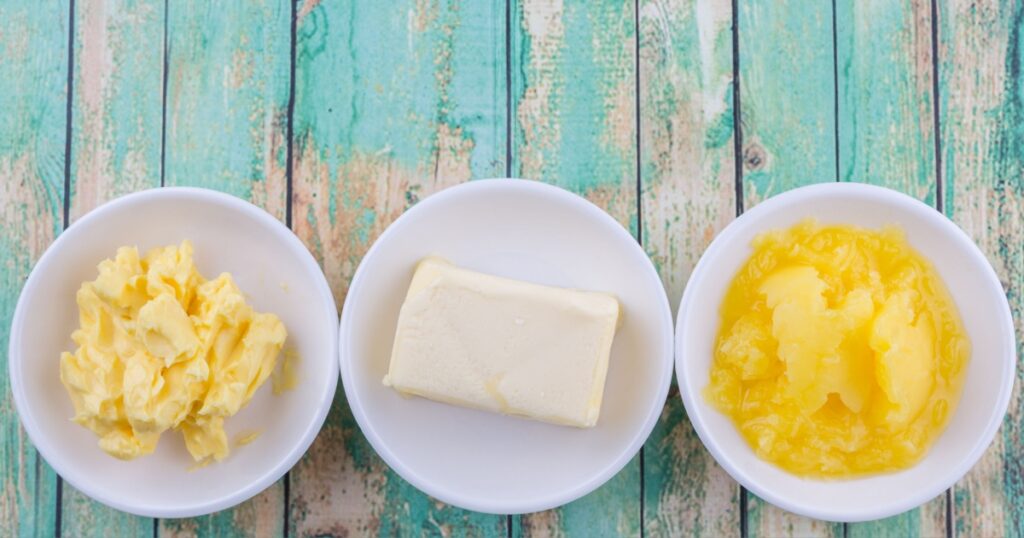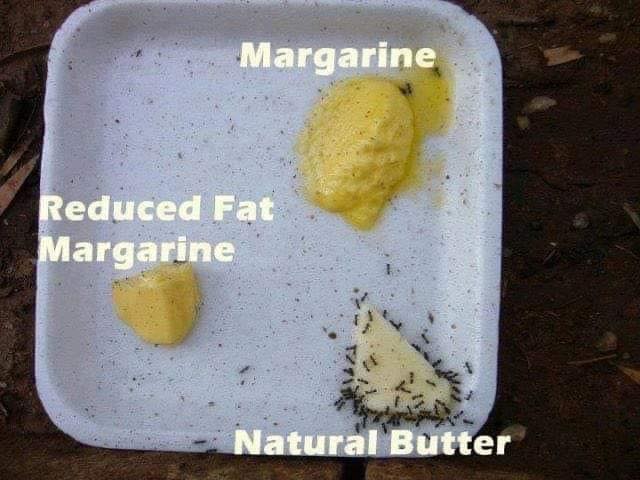The debate on whether butter or margarine is healthier has been ongoing for decades, with experts and consumers alike weighing the pros and cons of each option. To tackle this topic, it is crucial to provide a balanced look at both butter and margarine, acknowledging the historical context of margarine’s production and the significant changes it has undergone in recent years.
Butter vs. Margarine: A Historical Perspective

First, it’s important to acknowledge the history of margarine, which has significantly evolved from its early days. Margarine was developed in the 19th century as a more affordable alternative to butter. In its early iterations, margarine was heavily processed and contained trans fats, contributing to the negative perception of its health impacts. However, with advancements in food technology and improved manufacturing processes, modern margarine products have undergone a transformation, notably eliminating trans fats that were once a concerning component. This shift has led to a significant improvement in the overall nutritional profile of margarine. (1)
Understanding the Nutritional Profile

When comparing butter and margarine, it’s essential to understand their nutritional differences. Butter is high in saturated fat, which has been a point of controversy regarding its potential impact on heart health. On the other hand, margarine is rich in unsaturated fats and no longer contains trans fats in modern formulations. The elimination of trans fats in margarine is a significant improvement, as these fats have been scientifically linked to adverse health effects. (2)
“The process changes the structure of the fat molecules, which then changes the melting profile of the fat. It doesn’t change the amount of saturated monounsaturated, it just changes the structure of where the molecules sit within the fat. So that, again, you can have a spread that has the suitable melt profile so that it’s semi hard in the fridge and then soft for spreading when you take it out of the fridge,” Dr Sarah Berry explained to the Huffington Post.
Examining Scientific Perspectives

One of the primary concerns associated with margarine has been its high content of polyunsaturated omega-6 fatty acids. There have been suggestions from some quarters that excessive omega-6 intake may promote inflammation. However, it is vital to note that controlled studies do not consistently support this theory. This nuance underlines the complexity of nutrition science and the ongoing need for comprehensive research to fully discern the implications of various dietary components.
Read More: Is Peanut Butter Healthy?
The Modern Landscape

In recent years, as concerns about trans fats have become widely recognized, many margarine products have been reformulated to be trans-fat-free, utilizing healthier oils such as olive oil. This evolution in margarine’s manufacturing processes has significantly improved its nutritional quality. Additionally, for those who prefer the taste and texture of butter, there are now high-quality options made from grass-fed cow’s milk, contributing to a broader range of choices for consumers.
Consumer Choice and Moderation

In the end, the decision between butter and margarine may come down to personal preferences and dietary considerations. While the ongoing debate continues, both options can be part of a balanced diet when consumed in moderation. Choosing trans-fat-free margarine and products made from healthy oils, alongside opting for high-quality butter, are important factors when incorporating these spreads into a balanced diet.
“If it’s at the level of intake that you know, most people in the UK and the US might consume by just spreading it, for example, on their sandwiches are on their toast, then the evidence at that level shows that it’s unlikely to have actually any significant long-term unfavorable effect at that low level of intake,” Dr. Berry explained about butter consumption.
The Bottom Line

The ongoing discourse surrounding butter and margarine demonstrates the complexities of nutrition and the constant evolution of food products. With modern margarine containing healthier ingredients and the reformulation of trans-fat-free options, it is clear that margarine has undergone a significant transformation, challenging the negative perceptions associated with its early iterations. Ultimately, as consumer understanding and food technology continue to evolve, it is crucial to make informed choices and consume both butter and margarine in moderation, recognizing the individual attributes of each option.
